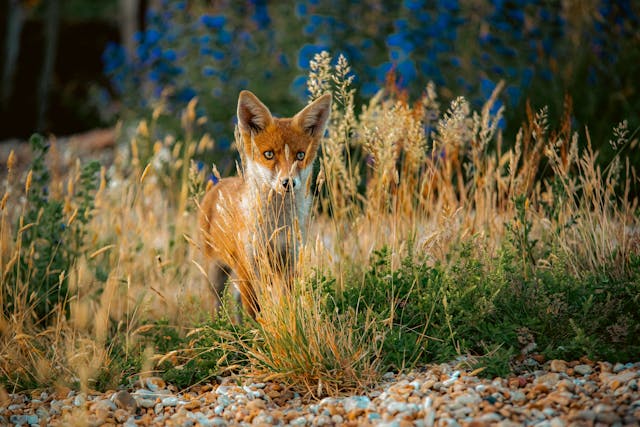
What are predator prey dynamics? Predator prey dynamics refers to the connection between the number of predators and the number of prey. If one number goes up, the other goes up, and then they drop again until the numbers balance. We might imagine that the number of rabbits and the number of foxes are always the same, but they constantly fluctuate.
As humans, we have basically taken ourselves out of the natural food chain. When we were hunter-gatherers and trying to find enough to eat, we were very much a part of the food chain. We ate what we could find, or kill, and we were eaten by animals that were bigger and more dangerous than we were. As we developed communication and tools, we became more difficult for these prey animals to catch and we started to catch more animals than we would be able to with our bare hands. From this point on, we caught more and more animals, driving many to extinction, such as the dodo. By doing so, we have removed ourselves from the natural predator prey dynamics because we can always (at least in theory) produce as much food as we need. Most animals can’t do that.
Omnivores, like us, have evolved to be able to eat a wide range of foods. That helps us because if one type of food vanishes, we can eat something else. Carnivores and herbivores don’t work like that. Carnivores have usually evolved to eat the animals that live in the same area as them and herbivores have evolved camouflage to be able to hide from the carnivores that have evolved to try and eat them. Because of this, a growth or decline in one population will have a direct impact on another population.
Let’s look at our earlier example of foxes and rabbits to explain this. Now, foxes don’t only eat rabbits, and rabbits don’t only eat grass, but let’s assume for now that they do. Grass grows so long as it has good soil, enough water, and enough sunlight. If there were no rabbits, grass would continue growing until it had taken up all of the available space it could find. If this happened, a lot of other plants wouldn’t be able to survive because grass tends to be stronger. Enter the rabbits. Rabbits eat the grass and they stop it from taking over. Because the rabbits control the grass, other plants are able to thrive. If there were no foxes, the rabbits would eat the grass faster than it could grow and then the rabbits would start to die out because there isn’t enough food for them. Enter the foxes. The foxes eat the rabbits and they stop the rabbits from eating all of the grass. In a perfectly balanced system, each level of the food chain would keep the one under it in check. However, that is not what happens and that is the predator prey dynamic. If there are more rabbits, they will eat more grass, but more foxes will be born to take advantage of the increased food supply. That means the number of rabbits will decline because they are being eaten and they have less food. The decreasing number of rabbits means that there will be fewer foxes because they don’t have enough food, but more grass because it is not being eaten. Fewer and more grass means more rabbits can survive, so their numbers will expand again. And this continues indefinitely. This is an extremely simplified version because all animals eat multiple food sources and there are different factors that can reduce their numbers, such as climate change. But it shows that one change in the food chain has a ripple effect.
There is a formula to try to work all of this out. It is called the Lotka–Volterra equation. I don’t see how that is possible because there are far too many variables, but Wikipedia says that they assume a lot of things to make the equation work. Apparently, it can also be used for marketing as well. It can show you the likely increase or decline of a market.
This predator prey dynamic is one of the reasons why invasive species are such a problem. All levels of the food chain have evolved to be predators or prey, and they generally keep each other in balance. If you introduce an invasive species, they might not have a natural predator, or their prey might not have evolved to avoid them, and they can eat until the ecosystem is destroyed. This is what happened when rabbits were introduced into Australia. And this is what I learned today.
Try these
Sources
https://www.nature.com/scitable/knowledge/library/dynamics-of-predation-13229468
https://en.wikipedia.org/wiki/Lotka%E2%80%93Volterra_equations
Photo by Zoe Jackson: https://www.pexels.com/photo/orange-fox-between-tall-grass-and-weeds-26655785/
